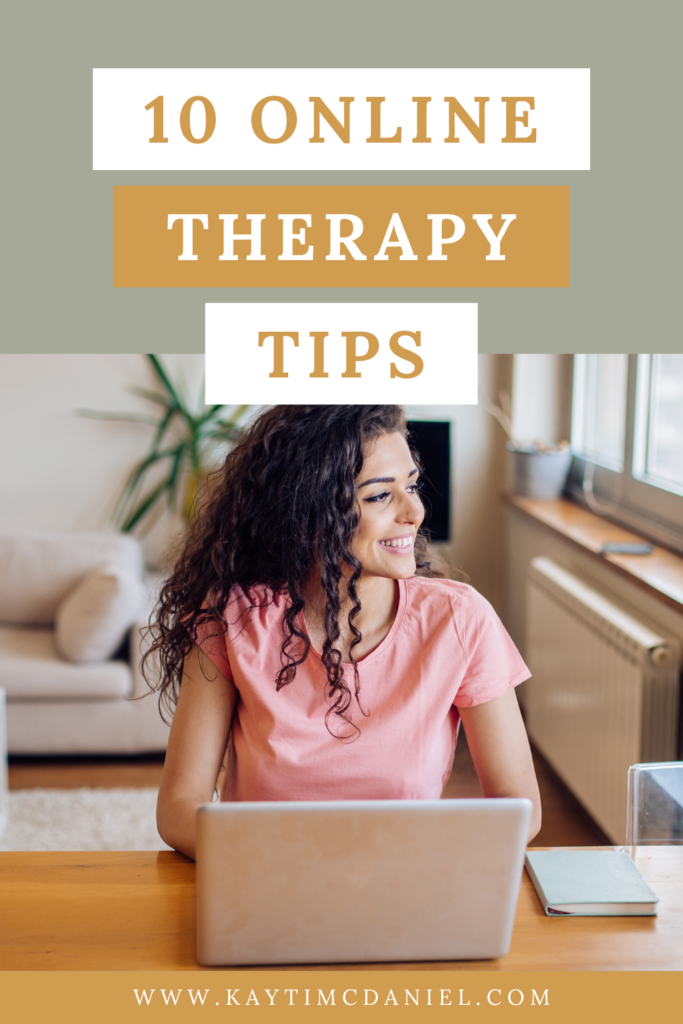
If this is your first time trying online therapy, you may be wondering what to expect.
Unlike in-person therapy, online therapy requires a bit more preparation and collaboration to ensure a confidential, connected, and comfortable session. You’ll need to work together with your therapist to create the best possible experience for you.
Here are ten steps to prepare for your first (or next) online therapy session:
1. Find a private space.
This could be a bedroom, laundry room, walk-in closet, office, or even a parked car. Ideally, you would have the option to lock the door and be shielded from the view of others.
2. If there are other people nearby, ask for their help to maintain your privacy.
Request that they avoid entering your space during your scheduled meeting time.
3. Mask the sound of your session.
Usually this involves placing some sort of ambient sound right outside of the door. This can be a white noise machine or a fan turned up to its highest setting. To give you an idea of whether this is effective, you can ask a friend or family member to go inside of the room, close the door, and speak at a normal volume. If you can hear them, they’ll be able to hear you. You can make additional adjustments as needed until you’re assured that the sound is masked.
4. Disable any services that may be listening to you during session.
If your device has a name and you can talk to it (I’m lookin’ at you, Siri and Alexa!), temporarily toggle settings to disable listening functions. This is to prevent any accidental recordings of confidential information being shared with strangers unintentionally.
5. Consider using earbuds or headphones.
This will not only improve sound quality (reducing echo) but will also add a layer of privacy, as you will be the only person to hear the other side of the conversation.
6. Decide which device to use.
Whenever possible, it’s best to use the largest device you have that will work in your private space (such as a laptop, desktop computer, or even streaming to a TV monitor). A smartphone or a tablet will work in a pinch.
7. Position your camera at eye-level.
Prop up your device with whatever you have on hand to ensure it stays stable and in place. This can be something like a basket, box, small stack of books, or — if you’re using a smartphone — a phone stand.
8. Make sure you are well lit.
Light from a window or lamp will usually do the trick. Just make to position the light source in front of you and not behind (this will help your therapist to see your face versus just your silhouette).
9. Close all programs and tabs that you won’t need during session.
Ideally, this includes asking family members to temporarily log off streaming services that are using the same WiFi as you. This will help free up the bandwidth necessary to have a smooth internet connection. Other tips to improve your connection are to position your device close-ish to your WiFi router or use a cable to plug it in directly.
10. Get comfy!
One advantage of joining therapy from your own space is that you get to decide what makes YOU most comfortable. Feel free to bring a beverage of your choice, tissues, and anything else that will help you feel cozy and safe.
Still have questions about how to best prepare for your first (or next) online therapy session?
No worries! Your therapist should be able to help you troubleshoot as needed.
As a telemental health certified therapist, I’ve received specialized training to support you via online therapy. If you’re interested in working together, reach out for a free virtual consultation. Current clients — feel free to bring your questions to our next session or message me directly through our secure client portal.